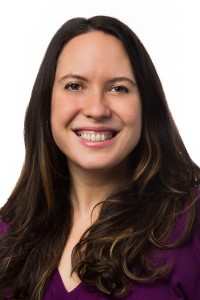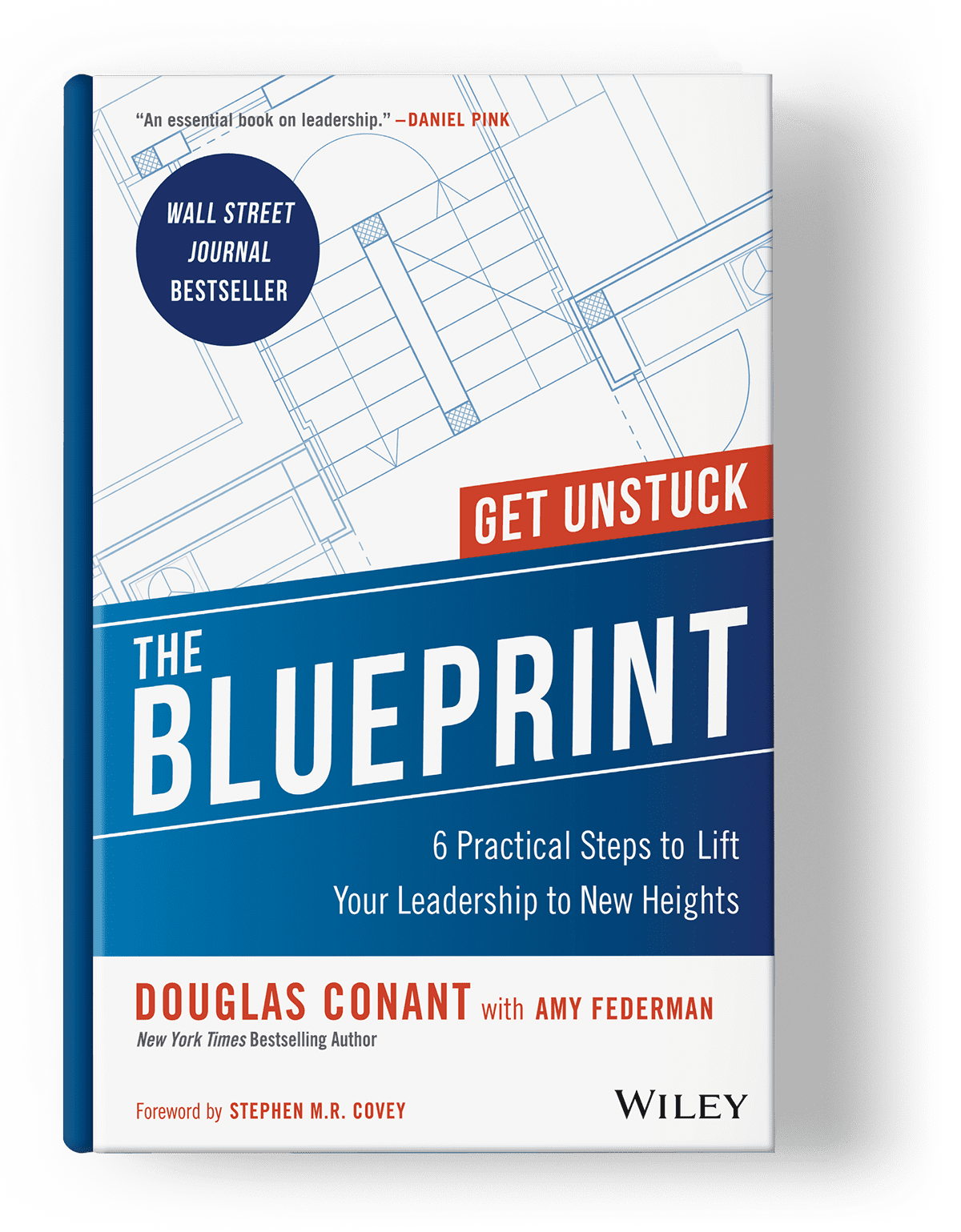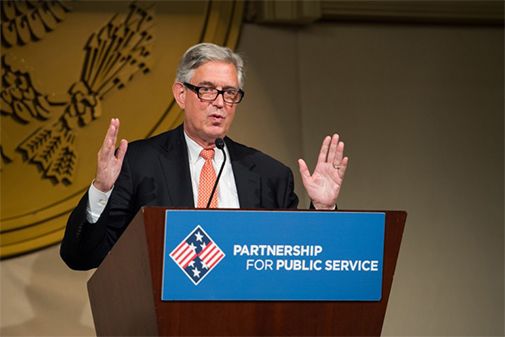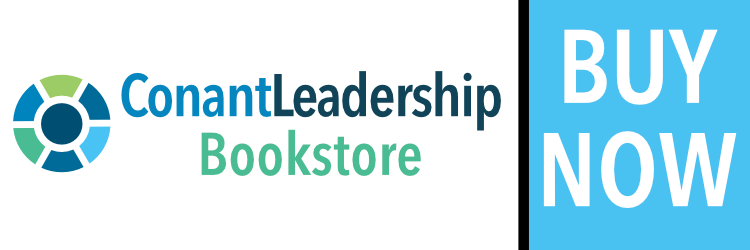‘Crisis Drives Change’—Doug Conant and Abercrombie & Fitch CEO Fran Horowitz on the Future of Work
This fall, ConantLeadership held our 4th biannual BLUEPRINT Leadership Summit—a week-long meeting of top leadership minds and luminaries.
At the summit, ConantLeadership Founder Doug Conant and Abercrombie & Fitch CEO Fran Horowitz convened to discuss the future of work in the post-pandemic era.
Both panelists are turnaround CEOs and uniquely qualified to discuss transformational leadership. Conant dramatically improved lackluster financial performance and reinvigorated employee engagement during his ten-year tenure as CEO of Campbell Soup Company (2001-2011). And Horowitz, who has been CEO and Principal Executive Officer of Abercrombie & Fitch (A&F) since 2017, was profiled by Fortune this year as “the CEO who miraculously made Abercrombie & Fitch cool again.”
Drawing from their combined C-suite experience, Conant and Horowitz imparted powerful insights for future-focused leaders who are managing the pandemic’s aftershocks. As the moderator of their session, below are my top takeaways from their conversation—including three levers of culture transformation, and three levers of employee engagement for today’s fraught landscape.
‘Crisis Drives Change’ – 3 Levers of Culture Transformation
The pandemic radically upended workplace culture and employee expectations. From the “Great Resignation,” to the hotly debated phenomenon of “Quiet Quitting,” and now to the “Great Breakup,” multiple converging trends show that people are rethinking their relationship to their careers, their companies, and their leaders. What may have worked before to inspire employees is insufficient in today’s environment.
Conant says, “the world is getting tougher,” and that leaders “must kick it up a notch” to succeed. He points to Horowitz, whose surveys rank A&F in the top employee engagement decile, as an example of a CEO who’s doing it right under demanding circumstances.
As many organizations are struggling to attract and retain talent, A&F’s performance, talent retention, and stakeholder satisfaction is on an upswing. What’s the secret sauce? Horowitz says that while “the last three years have been incredibly challenging,” there’s a silver lining: “Crisis drives change. And we have to embrace this moment and get out of it what we can.” She offers three tips for transforming culture amidst turbulence:
1. Push boundaries. Horowitz says leaders must model an iconoclastic ethos to weather marketplace storms: “We could not have gotten through the last three years if we just kept doing things the way were doing them before.” She shares that one “huge swing” she took was closing 137 unproductive stores in 2020; although it was a bold move, it allowed A&F to take 200 million off the balance sheet and has now paved the way to “open up the right stores, in the right locations, with the right economics.”
Horowitz says a boundary-busting mindset extends beyond strategy and infuses into the workplace culture: “Set an environment for your team where they can push boundaries and feel comfortable to take risks,” and let them know that if a risk doesn’t pan out, “you can help them pivot.”
2. Encourage balance. If leaders want to bring their best selves to the challenges of the day, Horowitz says they must seek balance—both professionally and personally. She warns, “don’t over-index to work, and don’t over-index personally, but strike a balance between the two,” and find things that “alleviate your personal stress,” (for her, it’s yoga, but she urges leaders to find what works for them). Then model the behavior and publicly encourage associates to seek balance too.
Conant agrees that balance is an essential tenet of effective leadership in troubling times. He shares that he himself had to recalibrate during the pandemic: “I was leaning in to help everybody else, and I wasn’t taking care of myself,” but ultimately realized “you can’t pour from an empty cup.” He tells leaders, “you must take care of yourself so you can serve others in a sustainable way. Otherwise, you’ll be taking a long walk on a short pier.”
3. Lead with empathy. Horowitz cites a people-first approach, which exalts the twin virtues of empathy and purpose, as the top lever of culture transformation—especially today. She explains: “You don’t realize what a shadow you cast as a leader,” and “if you want people to follow,” and be on your side, you must “establish relationships” at all levels of the company, even “two, three, four, five levels down from who you may interface with on an everyday basis.” The key is to forge deeper personal connections, making sure “you know what someone is doing or feeling personally outside work,” and remembering “to ask about their children,” goals, events, tribulations, and milestones. Horowitz says simple demonstrations of empathy go “a very, very long way with people. It builds trust. It builds longevity.”
Conant, a longtime proponent of putting people first, echoes Horowitz’s call for more empathetic leadership: “These are skills we always needed, but the situation today demands a heightened commitment to them.” Calling back to the importance of balance, he urges leaders to be “both tough-minded on standards of performance and tender-hearted with people,” and to reject the false dichotomy of, “Am I tough or am I nice? It’s both.”
Conant tidily summarizes the call-to-action for transformational leadership today and tomorrow: “We’ve got to be good stewards of the financials of the business and the strategy. But we have to realize it’s all for naught if we don’t have a fully engaged workforce.”
‘Full Engagement’ – 3 Levers of Employee Engagement
In lockstep about the importance of earning “full engagement” through empathetic leadership, both panelists say that honoring the agenda of all stakeholders is mission critical.
As groundwork, they celebrate authenticity. Horowitz says, “people today see through things that are not authentic,” so leaders must be “genuine, authentic, approachable, and communicative.” Conant builds on this, reminding leaders, “it’s hard to be authentic if you’re not really anchored in your story,” and warns you can’t, “have the courage of your convictions if you don’t know what your convictions are.”
Before the panelists get granular with recommendations for bolstering engagement, they set the table with the need to first be “self-aware.” Conant says: “You cannot lead people to higher ground until you get a little more grounded” yourself. Once you’re anchored in self-trust, you can leverage these top drivers of employee engagement:
1. Build from the bottom. If creating the company purpose is a top-down endeavor, it’s dead on arrival. Coming into the CEO role at A&F, Horowitz shares, “we didn’t really have leadership standards, we did not have a corporate purpose to tie everything together,” and she decided to “start from the bottom up.”
Before A&F could land on a unifying message for the enterprise, Horowitz had to dig into five different brands with muddled identities: “We built each brand with their purposes, and their DNA, and their platform,” first getting them each into a good place, “and then we layered our leadership standards on top of that.”
The secret to success was not dictating the agenda from a pulpit but from listening and learning. Horowitz shares: “It took lots of customer insights, and associate insights, and really, really understanding who we were working for” to arrive on their new unifying purpose: “Being here for you on the journey to being and becoming who you are.” She says the message comes directly from conversations with employees and “ties all of our brands together,” while capturing associates’ “personal journey, their career journey, and it has resonated tremendously with the team.”
2. Lead by listening. Listening was essential to re-awakening the purpose at A&F, and the panelists say it’s also a guiding principle for effective leadership overall.
Conant declares, “It’s more important now that we lead by listening,” which means you must “be really alert to the world around you, to what’s being said, but also what’s not being said.” This skillset requires asking questions and being hyper-curious. He explains, “it’s not about how much you know, it’s about how much you learn. Some CEOs want to be the smartest person in the room,” but the best leaders “want to be learning from all around the room.”
Horowitz concurs: “We pride ourselves on being a test and learn culture.” She shares that A&F’s popular hybrid work model flows directly from listening to employees and avoiding assumptions that can lead to solving the wrong problems. For example, some A&F internal surveys showed dissatisfaction with “work-life balance” pre-COVID. During COVID, “we asked the question again in a different way and we learned they were really asking for flexibility,” and “now we’ve created that.” Horowitz stresses, “it’s very important to dig in and make sure you truly understand” what people are telling you, then act on the information, continuously ask questions, and iterate.
3. Over-communicate to build trust. Conant, who coaches and trains hundreds of leaders each year, has tracked a growing paradigm-shift: “We’re moving away from a command-and-control environment to a trust-and-inspire environment.” He says that earning trust “demands a certain level of transparency,” and requires leaders to boldly declare where they stand and practice what they preach. Constituents must feel they can take your word “to the bank,” and that “you have their back,” which demands a deeper investment in communication than in years past.
Horowitz builds on this, crediting A&F’s decreased employee turnover and higher engagement to her commitment to “over-communicate” during the darkest days of the pandemic. As angst festered in many other organizations, she proactively squashed uncertainty: “we didn’t let people wonder and be worried about what was happening,” and instead took a blitzkrieg approach of excessive communication including “forums with open Q&A,” a steady stream of email, and convening a task force to collaborate on the best path forward for return-to-work.
Both panelists are careful to point out that transparency also maps to humility. They agree that “over-communication” should extend to “mistake management,” citing that the best leaders issue mea-culpas and admit when they’re wrong, which “shows you’re human,” and fortifies trust.
Horowitz and Conant are unanimous that the future of work requires more enlightened leadership. Heed their wisdom: Transform your culture by pushing boundaries, encouraging balance, and modeling empathy. And engage employees by building from the bottom, leading by listening, and over-communicating.
Horowitz says the operating mantra for leaders is simple: “People, people, people. It’s people first,” because, “without human capital nothing else really exists or really matters.”
 About the Author: Amy Federman is ConantLeadership’s Editor in Chief and Director of Content, and co-author with Doug Conant of the WSJ bestseller, The Blueprint.
About the Author: Amy Federman is ConantLeadership’s Editor in Chief and Director of Content, and co-author with Doug Conant of the WSJ bestseller, The Blueprint.
Enjoyed these insights? Watch the full video recording of this summit session here (fast forward to minute 00:07:30 to skip intros and housekeeping). And enjoy our library of previous summit sessions here, including conversations with Brené Brown, Indra Nooyi, Hubert Joly, Amy Edmondson, Bill George, and many more.
For more leadership content, engage with ConantLeadership’s suite of written leadership resources here, or start your Blueprint journey—a practical approach for future-proofing your personal leadership journey—by getting your signed copy of the book here, or by downloading the first chapter free here.
Ready to step into your full leadership potential? Apply to our signature leadership development program, The BLUEPRINT Boot Camp by ConantLeadership, a 2-day leadership intensive offering elite level, highly interactive training with Doug Conant and a community of your peers. Learn more about this premium tier of transformational leadership development here or set up a complimentary consultation call here.
(Cover photo by Pawel Czerwinski on Unsplash)

“Doug Conant is remarkable—and so is this work.“
– Stephen M. R. Covey
Author of The Speed of Trust

The Blueprint
6 Practical Steps to Lift Your Leadership to New Heights
By Douglas Conant with Amy Federman

Have Doug Speak at Your Event
Doug works collaboratively with event organizers to customize his material for each audience.



0 Comments